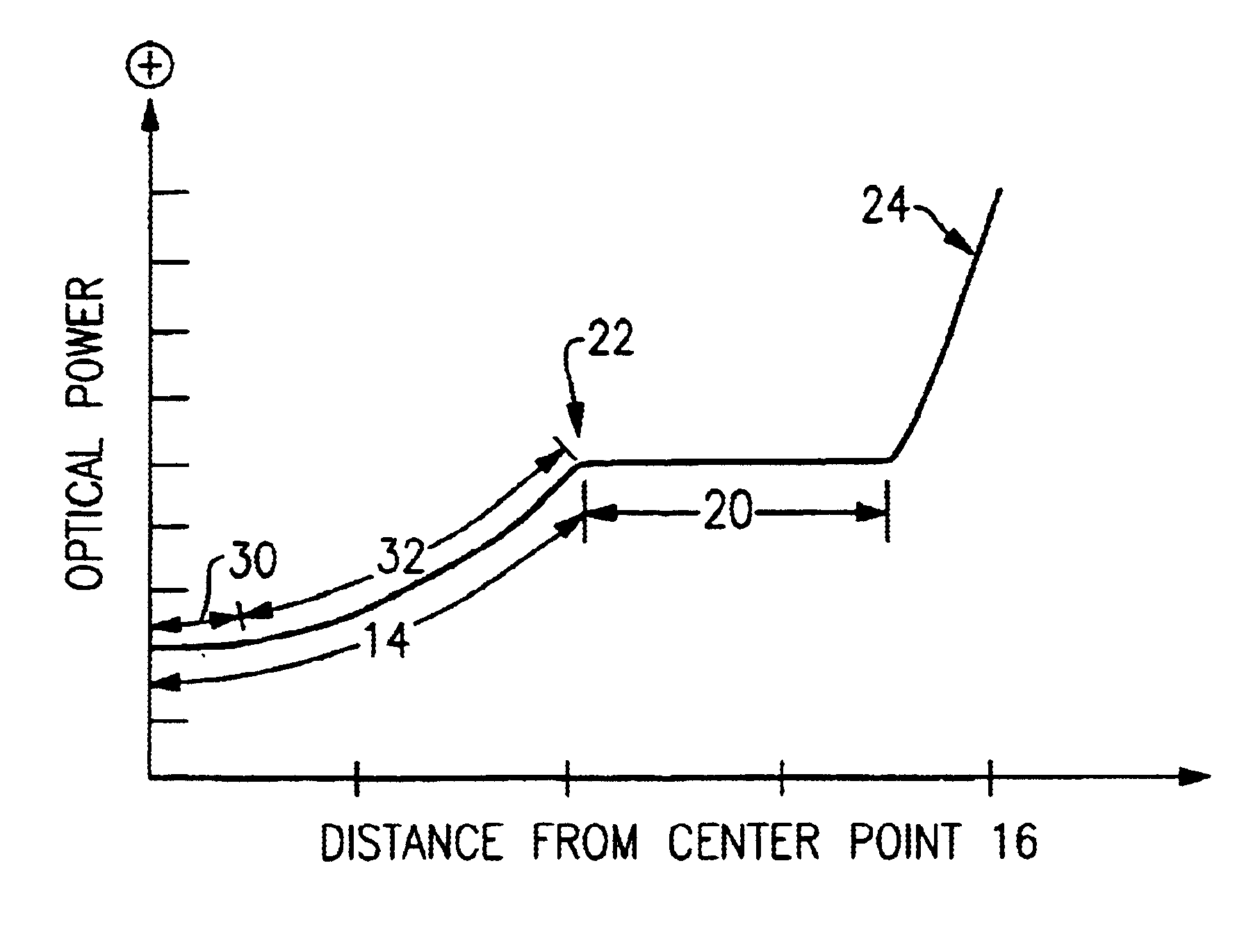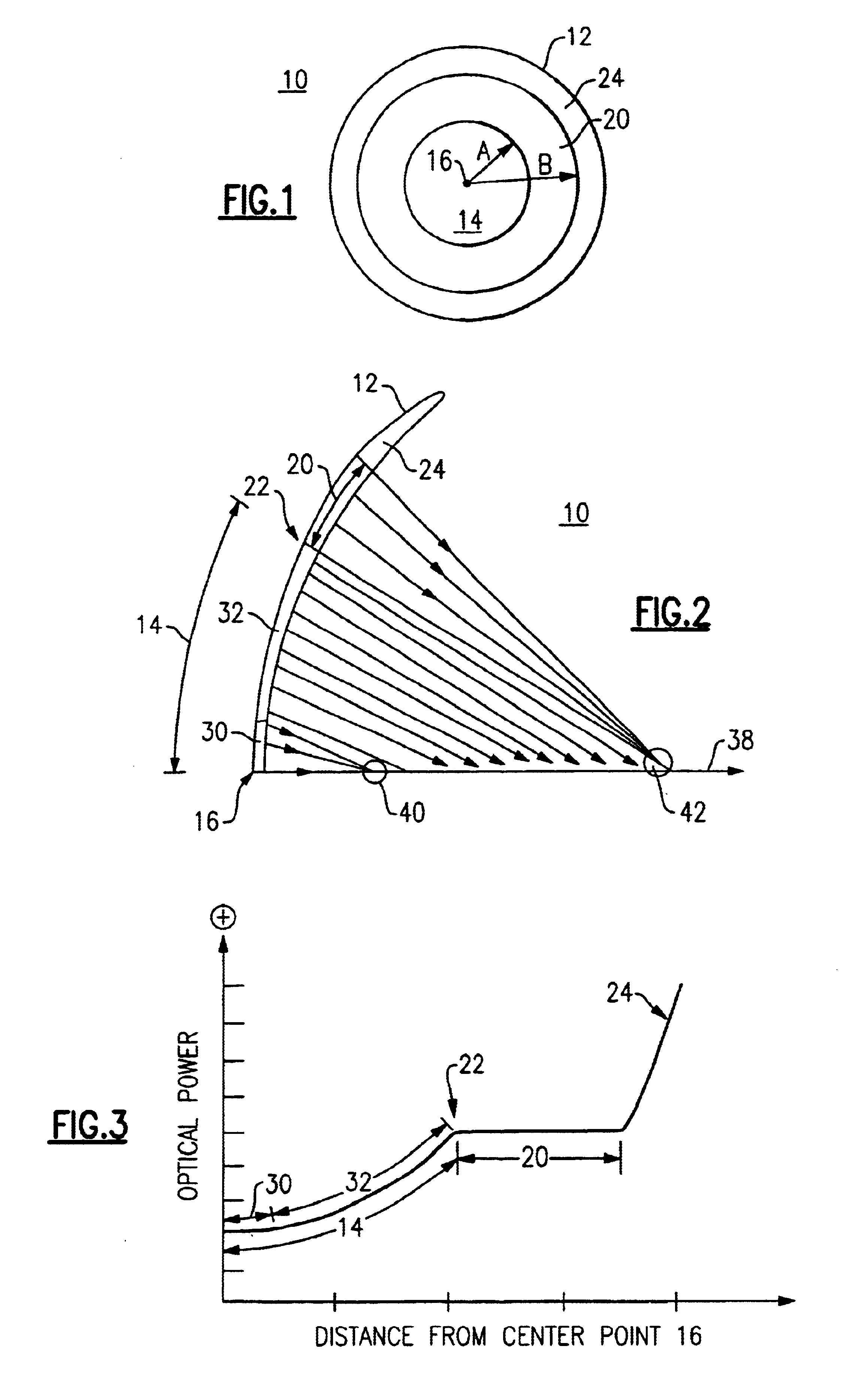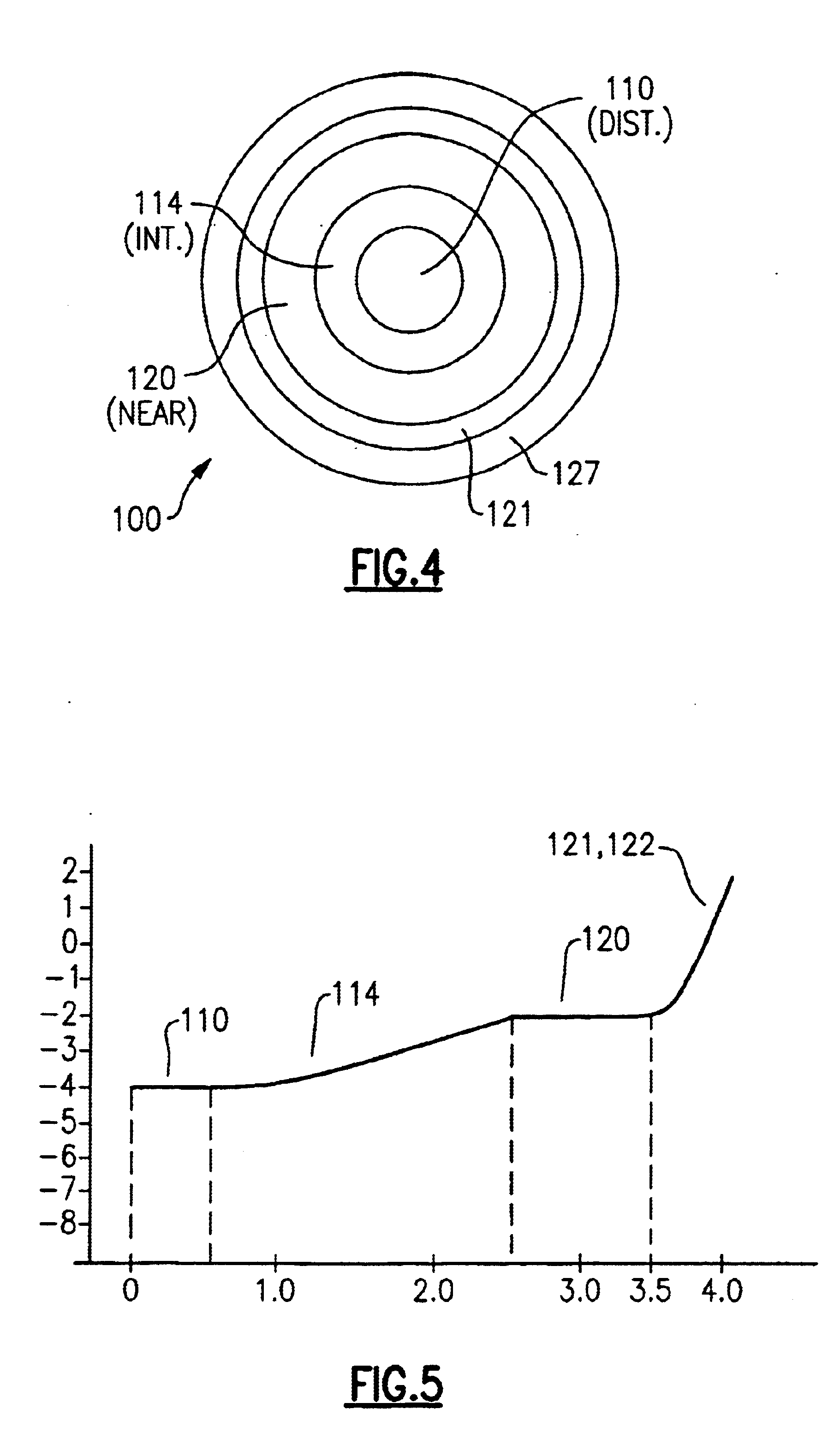Multifocal contact lens
a contact lens and multi-focal technology, applied in the field of multi-focal contact lenses, can solve the problems of reducing the ability of natural lenses to focus on near objects, affecting the performance of lenses for near vision or distance vision, and reducing the eccentricity of the lens
- Summary
- Abstract
- Description
- Claims
- Application Information
AI Technical Summary
Benefits of technology
Problems solved by technology
Method used
Image
Examples
Embodiment Construction
According to an exemplary embodiment of the invention a lens 10 having a front surface 12 is shown in the schematic view of FIG. 1. The lens 10 may be of the Rigid Gas Permeable (RGP) type or may be a soft lens and for purposes of illustration may be assumed to have a total diameter of 9.6 mm. Other exemplary dimensions are based on this diameter. A first rotationally symmetric central zone 14 is formed along the surface 12. The zone 14 extends from a central point 16 outwardly along the lens surface a distance A. By way of example, A may be about 2.5 mm, but more preferably will be about 3.25 mm.
A second rotationally symmetric zone 20 extends outward along the surface 12 from the first zone 14 to a distance B measured from the central point 16. The distance B may be on the order of about 3.5 mm to about 4.0 mm. The zones 14 and 20 meet at a circular shaped junction 22 which is symmetrically centered about the point 16. The combination of the zone 14 and the zone 20 provide the opti...
PUM
 Login to View More
Login to View More Abstract
Description
Claims
Application Information
 Login to View More
Login to View More - R&D
- Intellectual Property
- Life Sciences
- Materials
- Tech Scout
- Unparalleled Data Quality
- Higher Quality Content
- 60% Fewer Hallucinations
Browse by: Latest US Patents, China's latest patents, Technical Efficacy Thesaurus, Application Domain, Technology Topic, Popular Technical Reports.
© 2025 PatSnap. All rights reserved.Legal|Privacy policy|Modern Slavery Act Transparency Statement|Sitemap|About US| Contact US: help@patsnap.com



